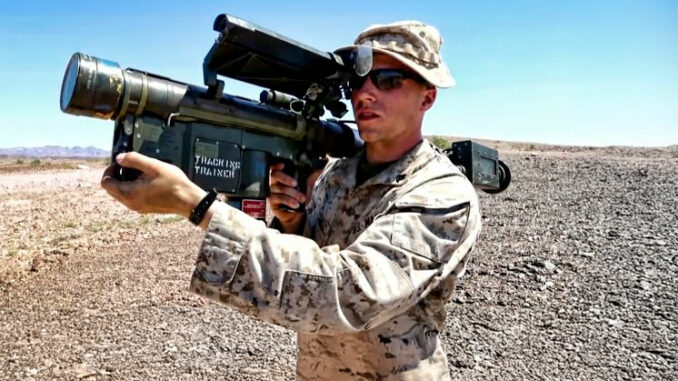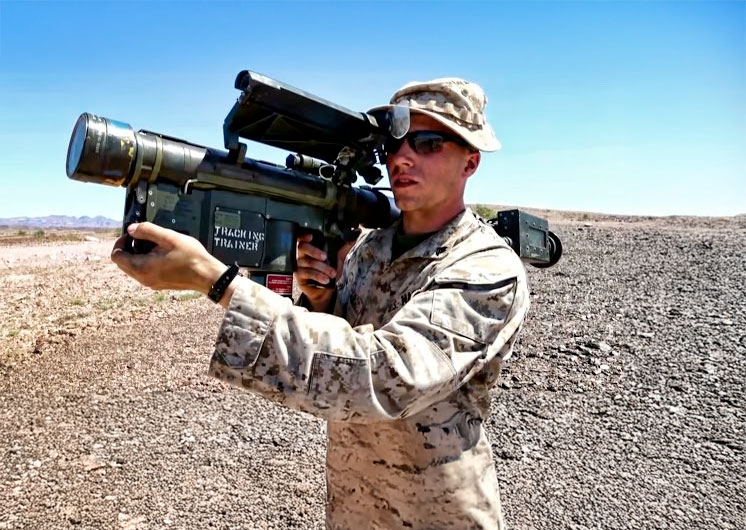
Egypt invests $740 million in 720 FIM-92 Stinger missiles, integrated with M1097 Avenger systems to counter regional air threats.
Egypt has purchased 720 FIM-92 Stinger missiles for $740 million to strengthen its air defense. The missiles will be integrated with M1097 Avenger systems, providing an enhanced capability to neutralize air threats, including Ethiopia’s Su-27 fighters. The acquisition is aimed at protecting vital infrastructure, such as the controversial GERD dam, while preparing for potential regional conflicts. Stingers, known for their ability to intercept targets at low altitude, are used in many conflicts and remain a key component of the modern military arsenal.
FIM-92 Stinger acquisition: Egyptian military strategy
Egypt recently confirmed the purchase of 720 FIM-92 Stinger missiles at an estimated cost of $740 million (around 703 million euros). These missiles, manufactured by Raytheon, are intended for use with the M1097 Avenger, a mobile air defense system mounted on a military Humvee chassis. This acquisition strengthens Egypt’s ability to defend its critical infrastructure against aerial attack.
M1097 Avengers are already a mainstay of Egyptian defense, with around 50 units in service. This fleet has been progressively expanded, notably with a contract in 2006 for a further 25 units, half of which are dedicated to training and operational use. The addition of Stingers to this fleet considerably enhances the system’s effectiveness against low-altitude air threats.
The choice of the Stinger is part of a broader defensive strategy. Faced with rising tensions with Ethiopia, and in particular the controversy surrounding the Grand Renaissance Dam (GERD), Egypt needs to protect its vital resources, especially its water reserves. These missiles offer a decisive asset in deterring potential air incursions, providing enhanced protection for its sensitive infrastructures.
FIM-92 Stinger technical specifications
The FIM-92 Stinger is a portable missile, designed for use against low-flying aerial targets such as helicopters and fixed-wing aircraft. Its weight of 10 kg and length of 1.52 meters make it a compact weapon that can be easily carried by a single soldier. Thanks to its infrared guidance system, the missile is able to lock onto the heat signature of aircraft engines, facilitating target neutralization.
The Stinger has a maximum range of 4.8 kilometers and can engage targets at altitudes of up to 3.8 kilometers, making it a formidable weapon in short-range air conflicts. Its performance has been proven in a number of conflicts, most notably in Afghanistan in the 1980s, where it played a crucial role in Afghan forces’ fight against Soviet aircraft.
The continuous improvement of the Stinger’s technology makes it still a highly effective weapon today. The latest versions benefit from upgrades, particularly in terms of accuracy and speed, enabling them to counter a wide range of modern air threats. This flexibility is a key factor in its adoption by armies around the world.

Geopolitical and security implications for Egypt
Egypt’s acquisition of these Stinger missiles is a response to a tense regional geopolitical situation, particularly with Ethiopia. The construction of the GERD on the Nile, essential for Egypt in terms of water supply, has exacerbated tensions. The strengthening of Egypt’s military capabilities, particularly in the field of air defense, is a clear message to neighboring countries of Egypt’s determination to defend its strategic interests.
Egypt’s main air challenge in this context is the Ethiopian air force, which is equipped with Su-27 fighter jets known for their maneuverability and speed. Stingers are particularly well suited to countering these aircraft, as they are designed to intercept fast targets at low altitude. The integration of these missiles into the M1097 Avenger systems enables Egypt to set up a mobile and reactive air defense system.
Egypt also faces threats from other regions, notably Libya and Sudan. These neighboring countries are themselves in the throes of internal conflict, and have air forces that could potentially threaten Egyptian security. In Libya, the armed forces have a fleet of MiG-23s and MiG-29s, aircraft that could be neutralized by Stingers in the event of conflict. In Sudan, Su-25 and MiG-21 aircraft also represent a potential risk. Thanks to the Stingers, Egypt would be able to respond effectively to an air incursion from these two countries.
Historical impact and evolution of the FIM-92 Stinger
The importance of Stinger missiles in contemporary conflicts goes back a long way. Their most notable impact came during the war in Afghanistan in the 1980s. Stingers were supplied by the USA to the Mujahideen forces fighting against the Soviet air force. This weapon quickly proved its effectiveness. In 1986, a Soviet MiG-21 was shot down near Paktia province, marking a turning point in the conflict.
Repeated Stinger successes in asymmetrical conflicts, such as the destruction of two Mi-24 helicopters in 1987, showed that this technology could enable light forces to challenge well-equipped armies. Military analyst Lt. Gen. Roy C. Klaus emphasized how these missiles changed the dynamics of low-intensity air battles. Even today, the Stinger continues to evolve to meet new challenges, such as the integration of modern electronic countermeasure systems to enhance its performance in sophisticated electronic warfare environments.
War Wings Daily is an independant magazine.